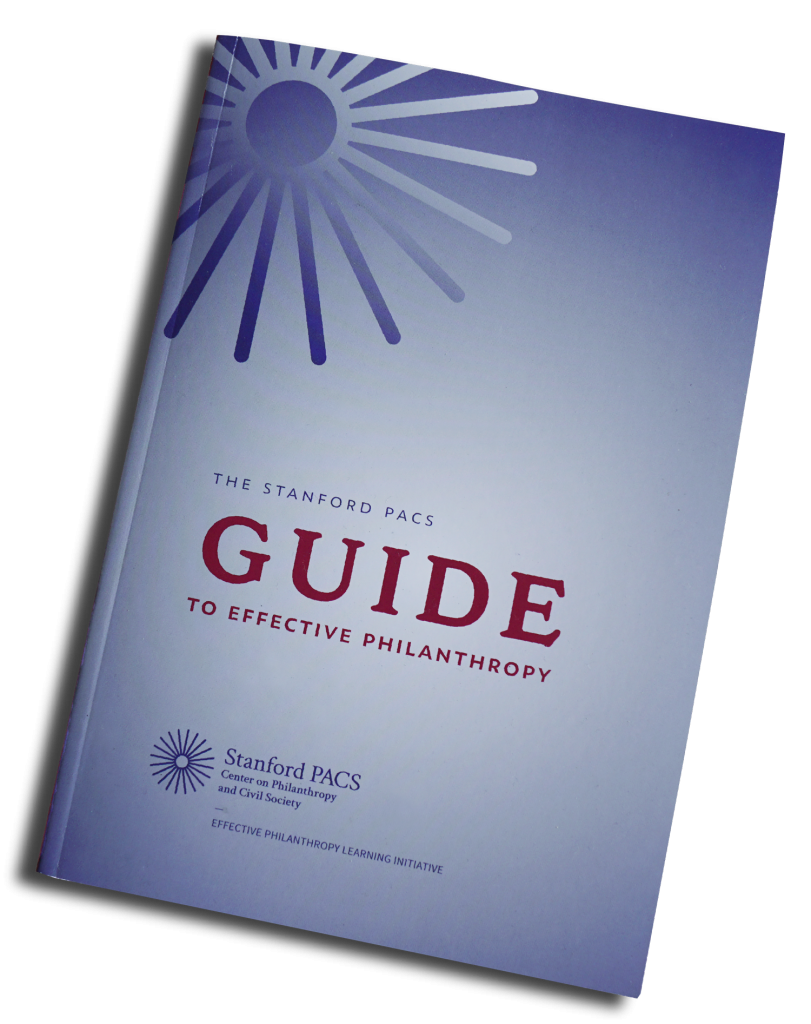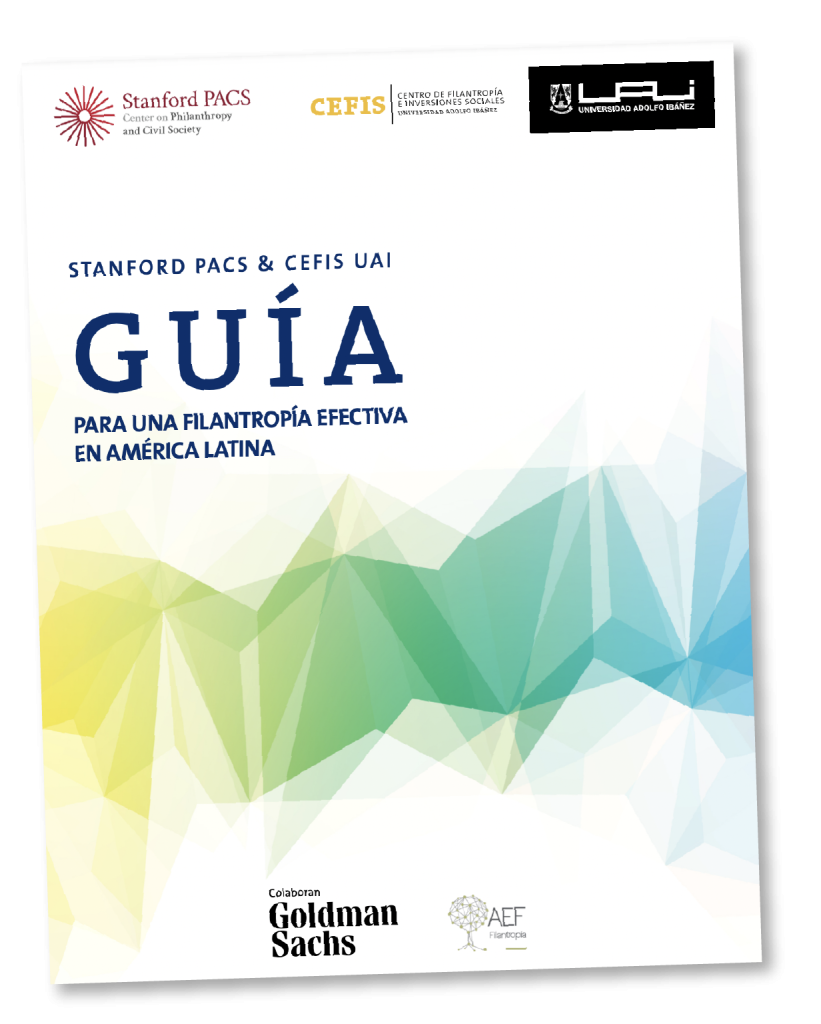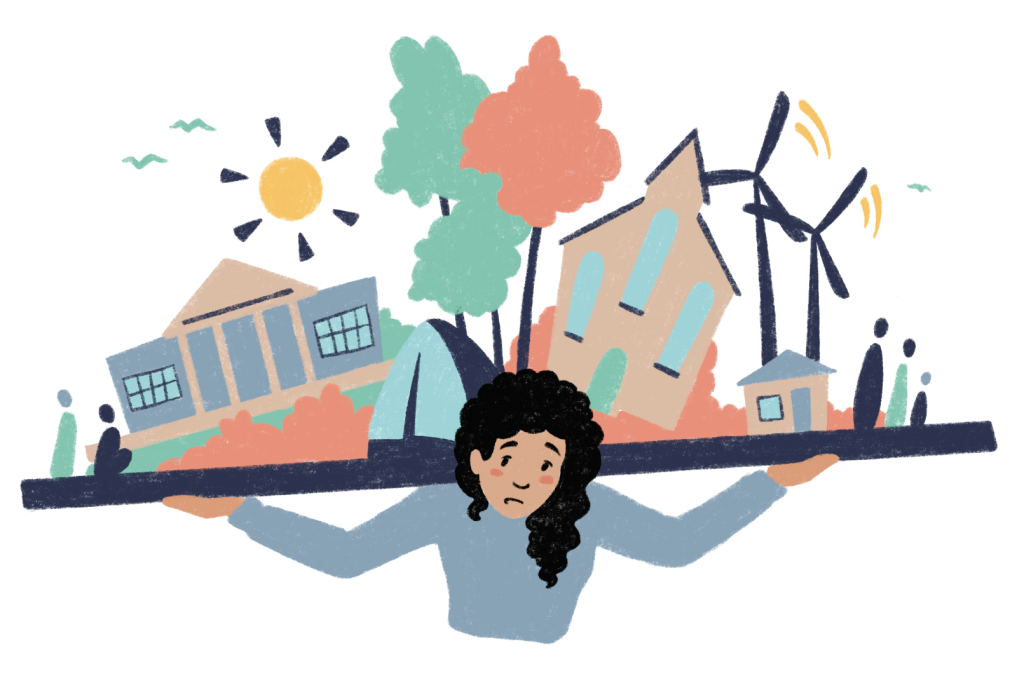Effective Philanthropy Learning Initiative
The Stanford PACS Guide to Effective Philanthropy
The Stanford PACS Guide to Effective Philanthropy
The Effective Philanthropy Learning Initiative’s Guide To Effective Philanthropy is our signature resource to guide to support emerging, high-capacity philanthropists through their funding journey. Full version is now available for download (pdf format), or you may download individual chapters or activities below.

If you wish to cite the Guide, please use the following attribution language:
This work is a derivative of “The Stanford PACS Guide to Effective Philanthropy” by Stanford Center on Philanthropy and Civil Society, copyright 2020 Board of Trustees of The Leland Stanford Junior University, used under Creative Commons Attribution 4.0 license.
The Story Behind the Guide
Project partner, Kathy Kwan (Eustace Kwan Family Foundation) explains the
motivations and intentions behind the Guide to Effective Philanthropy.

The Guide to Effective Philanthropy for Latin America
We are pleased to share this Spanish-language adaptation of EPLI’s Guide to Effective Philanthropy, which is entitled La Guía de Filantropía Efectiva para América Latina, created in collaboration with Stanford PACS and el Centro de Filantropía e Inversiones Sociales, (CEFIS UAI) and a committee of experts on Latin American philanthropy and social impact. For more information about CEFIS UAI.
Guide Chapters
Individual sections are available for download below, broken out by chapter. Clicking the chapter heading downloads the full chapter, while the links under them represent a specific activity or subsection within.
Introduction
If you are reading this Guide, perhaps you have experienced a “wealth event”—a sudden increase in your net worth from an IPO, inheritance, or the like—or perhaps you have been accumulating wealth during your working years. You may have been volunteering your time, including serving on a nonprofit board, and you have likely been responding to requests to give to your alma mater, your children’s schools, religious institutions, and organizations that you or your friends care about. Perhaps, on your own or with the help of your financial advisor, you have started exploring a few “giving vehicles,” such as donor advised funds or foundations.
You may be at an inflection point—a moment of reflection when you realize you would like to be more purposeful in your charitable giving. With more money and possibly time, you’re feeling the mounting pressure of requests. At the same time, you would like to improve your philanthropic impact: you really want to do it well. Though not professionally trained in philanthropy, you aspire to have a professional level of impact in the areas you care about.
This Guide is written for donors who are interested in significant and sustained giving.It was born out of our experience at the Stanford Center on Philanthropy and Civil Society in helping donors improve their philanthropic effectiveness. Although much of the Guide is relevant to philanthropy across the globe, it is focused on donors making gifts to US-registered charities.

Part One: Developing your Plan for Giving
Part Two: Implementing Your Plan
Conclusion
Keeping Track of Your Journey
In the introduction, we referred to philanthropy as a journey—a journey with both anticipated and unexpected experiences and great opportunities for learning. You will almost surely explore new focus areas and find new opportunities within existing ones. More fundamentally, you will develop new skills, more confidence, and greater courage as a philanthropic traveler. Expeditions that once were unthinkably remote and daunting will seem within reach.
Already read the Guide?
We welcome and encourage readers to contact us with feedback, suggestions, and personal stories from your own philanthropic journey.
If you have already accessed and read through the Guide, please submit your feedback here!
To write to us directly, please send questions and comments to: contact-epli@stanford.edu

